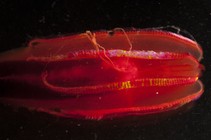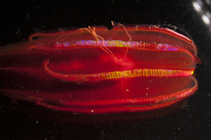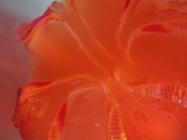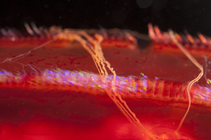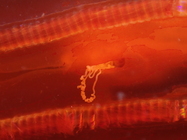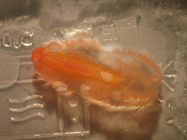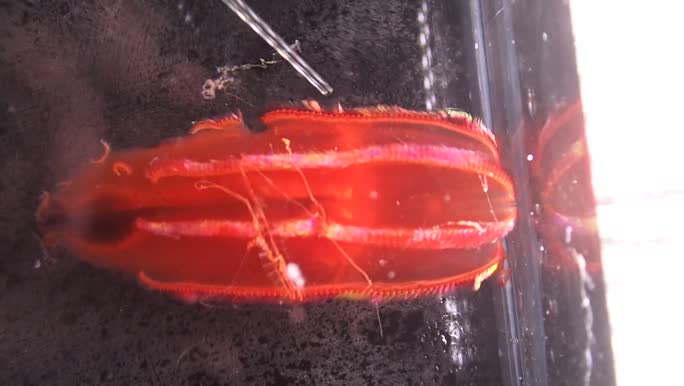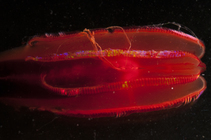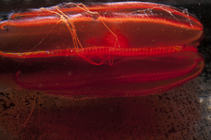WoRMS taxon details
Vampyroctena delmarvensis Townsend, Damian-Serrano & Whelan, 2020
1435019 (urn:lsid:marinespecies.org:taxname:1435019)
accepted
Species
marine, brackish, fresh, terrestrial
Townsend, J. P.; Tassia, M. G.; Damian-Serrano, A.; Whelan, N. V.; Halanych, K. M.; Sweeney, A. M. (2020). A mesopelagic ctenophore representing a new family, with notes on family-level taxonomy in Ctenophora: Vampyroctena delmarvensis gen. nov. sp. nov. (Vampyroctenidae, fam. nov.). <em>Marine Biodiversity.</em> 50:34., available online at https://doi.org/10.1007/s12526-020-01049-9
page(s): 6-9, figs. 1-5 [details]
page(s): 6-9, figs. 1-5 [details]
Holotype 45516
, Type locality contained in Delaware
Holotype 45516 [details]
type locality contained in Delaware [details]
WoRMS (2024). Vampyroctena delmarvensis Townsend, Damian-Serrano & Whelan, 2020. Accessed at: https://marinespecies.org/aphia.php?p=taxdetails&id=1435019 on 2024-11-21
Date
action
by
![]() The webpage text is licensed under a Creative Commons Attribution 4.0 License
The webpage text is licensed under a Creative Commons Attribution 4.0 License
original description
Townsend, J. P.; Tassia, M. G.; Damian-Serrano, A.; Whelan, N. V.; Halanych, K. M.; Sweeney, A. M. (2020). A mesopelagic ctenophore representing a new family, with notes on family-level taxonomy in Ctenophora: Vampyroctena delmarvensis gen. nov. sp. nov. (Vampyroctenidae, fam. nov.). <em>Marine Biodiversity.</em> 50:34., available online at https://doi.org/10.1007/s12526-020-01049-9
page(s): 6-9, figs. 1-5 [details]
page(s): 6-9, figs. 1-5 [details]
 Present
Present  Present in aphia/obis/gbif/idigbio
Present in aphia/obis/gbif/idigbio  Inaccurate
Inaccurate  Introduced: alien
Introduced: alien  Containing type locality
Containing type locality
From regional or thematic species database
Diagnosis Consistent 3:8 aspect ratio between the widest measure perpendicular to the oral-aboral axis and overall oral-aboral length. Aboral organ sunken approximately one-eighth of the total body length relative to the surrounding tissue. Comb rows extend along most of body length. The ctenes are ~ 3–4 mm long, and associated compound cilia are deep red in color. Paragastric canals with large lobate diverticulae. Tentacle sheaths perpendicular to the gut, approximately midway along the length of the animal’s body, opening into a large groove spanning ~ 30% of total body length along the aboral side. Large stomodaeum is roughly rectangular in the stomodaeal plane and flattened in the tentacular plane, appearing black in adult individuals. [details]
